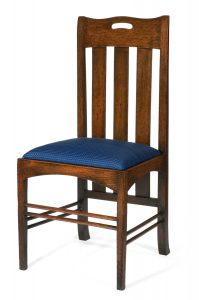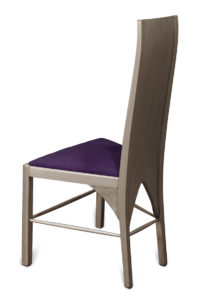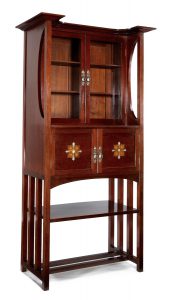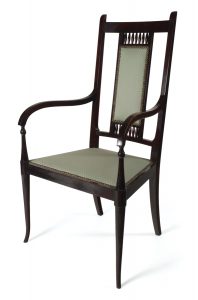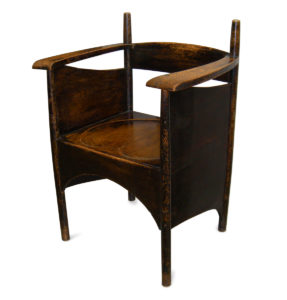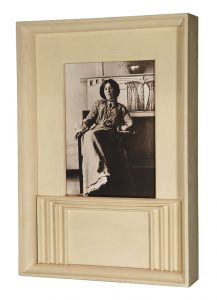Glasgow Style, 1896-1914
The Glasgow School was a circle of influential modern artists and designers who began to coalesce in Glasgow, Scotland in the 1870s and flourished from the 1890s to sometime around 1910. Glasgow experienced an economic boom at the end of the 19th century resulting in a burst of distinctive contributions to the Arts & Crafts and Art Nouveau movements. Glasgow Style (a blend of Celtic and Japanese art) significantly inspired other movements and groups such as the Wiener Werkstätte, Bauhaus, Vienna Secession and Deutscher Werkbund. Among the most prominent figures of the Glasgow School’s loose collective were acclaimed architect and designer Charles Rennie Mackintosh, the painter and glass artist Margaret MacDonald (Mackintosh's wife), MacDonald's sister Frances, and J. Herbert MacNair—who together were known as “The Four” and notably gave a celebrated display as part of the 8th Wiener Sezession exhibition in 1900 in Vienna. By the time the Mackintoshes left Glasgow in 1914, the group was also dispersing and getting fewer commissions. Their early modernism was too severe for most patrons, and their sinuous elongated figures, which had a great influence on painter Gustav Klimt, had been labeled the “Ghoul School” or the “Spook School”.

